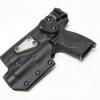-
Posts
11,179 -
Joined
-
Last visited
-
Days Won
5
Content Type
Profiles
Forums
Gallery
Store
Events
Posts posted by 4DAIVI PAI2K5
-
-
Good shoot.
-
Brown has been an ANTI for a long ass time.
-
It is just a tec-loc, can put them on any holster with the correct mounting holes.
-
So when is the ohioriders tactical handgun day gonna be? Think we could get a good turn out.
Everyone has to be naked to participate
-
 1
1
-
-
Can't wait!
-
I would go for a 400 also. I have a z400 and a 400ex. z400 has much more grunt to it.
-
Ill be picking it up also.
Send me a FR gamer tag is above my avatar
-
Sharing this from Absolute BS blog.
http://absolutebsblog.com/2014/02/18/coshocton-county-friends-of-the-nra-event/
-
 1
1
-
-
I'm assuming that everything will be a little better on the actual release. I'm having fun with it.
-
The training thing is pretty cool. If it wasn't there I would be confused as shit lol.
-
Its open now on the market place
-
yeah 45 bucks. new or used I dont care.
-
told ya I would trade for a blue gun.
-
.gov

planning on a SIRT pistol also.
then tomorrow after work I have to do a 1911 mag holster, G23 with RMR holster, a G19 w/ APL, Hood and duty drop and maybe a Sig 226 w/tlr1, hood and duty drop if he has time to drop it off to mold, and if the purple comes in a SR22 holster and mag holster. Going to be in the garage all night working.
-
anyone else get the titanfall beta? I'm loving it so far.
-
Working a double on a holiday so I can buy the lady a shield 9mm. Going to load Kawi Kid up with a bunch of .22 and 9mm and have him teach her to shoot. Since if the same words and tone came out of my mouth I would some how be yelling at her....
-
I disagree, reasonable restrictions on constitutional rights are acceptable, the norm and necessary. For example you can't yell Fire in a crowded theater and claim free speech. So a ban on citizens having rocket launchers and grenades is fine by me. Where exactly is the line between allowed and not allowed will always be in flux, debated and challenged. And that is a good thing.
This guy says it well I think.
The technical meaning of "arms" in teh Eighteenth Century was individual weapons and equipment for combat service. For example, "a stand of arms" (the basis under which colonels were required to equip their regiments, under the privage patronage regimental system britain used shortly before the Revolution) was the weapons AND EQUIPMENT considered necessary to equip one soldier for combat. It did not include his uniform, tentage, or food, but it did include his military grade long arm, his sidearms (which, depending on the period and regiment, could include some or all of the following -- sword, ax, bayonet, dagger, and/or pistol), and his cartridge box. "Arms" for other branches of service varied based on teh duties of an individual soldier in that type of unit -- lancers needed lances, mounted troops and artillery needed shorter long guns like carbines, etc.
Militia laws that defined "arms" included an individual supply of ammunition as well, which makes sense.
Note, however, that cannon were not "arms" in the military lexicon -- they were "pieces of ordnance". Grenades (and grenade launchers, which, yes, they DID have) were not "arms" -- grenades were "munitions" and the launchers were generally classed as "ordnance".
So, it is perfectly logical to state that the "arms" referred to in the amendment refers to things that make up the "ordinary military equipment" for individual soldiers (M16, M4, submachineguns, pistols, bayonets, web gear, body armor, etc.), but not the heavier support weapons that are crew served (cannons, heavy machineguns, nukes -- while these ARE "signed out" ultimately to the senior guy on the crew, you really assign the crew to the weapon, not vice versa) or issued out for unit support (grenade launchers, AT rockets, etc. -- see above; if the guy carrying the grenade launcher gets hit, you don't evac him with the GL; THAT stays with the UNIT).
Of course, saying something is not DIRECTLY protected by the Second Amendment is not the same as saying it has NO protection -- howitzers could be protected by a penumbra, or even under the 9th and 10th Amendments. This would require adjudication to firmly establish where heavy support weapons fall.
The status of something like a light machinegun (BAR, M249 SAW, RPK) which are issued out for unit fire support but are also the personal defensive weapon for the individual issued them would be in a grey area, requiring adjudication.
Likewise, claims that cannon and grenades are protected by teh 2nd Amendment "Because they were legal in Colonial and Founding times!" are empty. Just because something is not prohibited, doesn't mean it enjoys Constitutional protection under the Second (or any) Amendment. Maybe cannon are protected under the 2nd, maybe they aren't, or maybe they have a "penumbric" protection of lesser intensity than the protection given to individual arms -- all the legislative record shows us is that teh Founding fathers did not outlaw private ownership of heavy ordnance, not that they thought it was specifically protected. It could simply be that while they DIDN'T mean "cannon" when they said "arms", they simply didn't think there was a huge crime wave of robbers using field guns; therefor there was no REASON to pass a law prohibiting ownership of a very expensive hunk of iron and wood.
-
 1
1
-
-
Damn! First IL now Cali.
-
Yeah she is.
-
It's from some local shop I picked up at the Middleburg Heights/ Berea Gun show. That's weird, in the pic it shows the trigger guard but I can assure you it covers the entire thing lol.
Here's a close up. It's just the indented shape we see for the trigger guard area.

Sent from my iPhone.
Got ya, I see it now.
Add E to GOTT.
agree
-
Just got one last night from my girl friend. Picked up BF4, I suck at it. lol.
I picked up a 60" lg the night before...

<<<<<<Gamer tag is above the gun picture.
-
Sell it and get you a Volund gear works belt.
-
What holster is that?? Lots of trigger guard area showing.
-
Ranger!



What i did in guns.
in Dumpster
Posted
Picked up 600 rounds of 9mm so they girl can learn to shoot.......